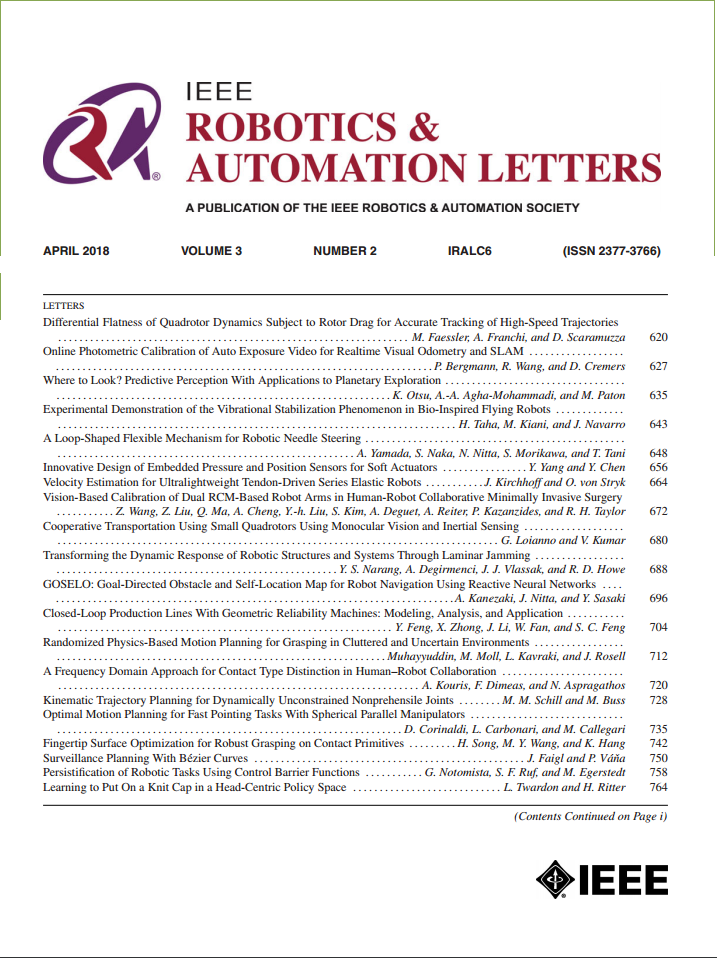Tightly-Coupled LiDAR-IMU-Leg Odometry With Online Learned Leg Kinematics Incorporating Foot Tactile Information
IF 5.3
2区 计算机科学
Q2 ROBOTICS
引用次数: 0
Abstract
In this letter, we present tightly coupled LiDAR-IMU-leg odometry, which is robust to challenging conditions such as featureless environments and deformable terrains. We developed an online learning-based leg kinematics model named the结合足部触觉信息的在线学习腿部运动学的lidar - imu -腿部紧密耦合里程计
在这封信中,我们提出了紧密耦合的LiDAR-IMU-leg里程计,它在无特征环境和可变形地形等具有挑战性的条件下具有鲁棒性。我们开发了一种基于在线学习的腿部运动学模型,称为神经腿部运动学模型,该模型结合了触觉信息(足部反作用力)来隐式表达机器人足部与地面之间的非线性动力学。该模型的在线训练增强了其对机器人重量负荷变化(如承担送货或运输任务)和地形条件的适应能力。根据神经自适应腿部里程数因子和基于腿部运动学模型运动预测的在线不确定性估计,在统一的因子图上共同解决该运动学模型的在线训练和里程数估计问题,以保持两者的一致性。通过四足机器人在两种具有挑战性的情况下进行的真实实验验证了所提出的方法:1)沙滩,代表一个具有变形地形的极端无特征区域;2)校园,包括多个无特征区域和沥青,砾石(变形地形)和草地的地形类型。实验结果表明,结合神经腿运动学模型的里程估计优于目前的研究成果。
本文章由计算机程序翻译,如有差异,请以英文原文为准。
求助全文
约1分钟内获得全文
求助全文
来源期刊

IEEE Robotics and Automation Letters
Computer Science-Computer Science Applications
CiteScore
9.60
自引率
15.40%
发文量
1428
期刊介绍:
The scope of this journal is to publish peer-reviewed articles that provide a timely and concise account of innovative research ideas and application results, reporting significant theoretical findings and application case studies in areas of robotics and automation.
 求助内容:
求助内容: 应助结果提醒方式:
应助结果提醒方式:


